The method of planting potted vegetables on the balcony to grow healthy vegetables by yourself.
With the improvement of people's living standards, some meat products have not been popularized by humans. And vegetables do show a need for novelty. So how do we use the available space to grow the vegetables we want? Balcony, I think this is every household has it! So why don't we use the balcony to grow potted vegetables? This can be beautiful, but also for people to appreciate and pick. And his method of cultivation is also very easy. Then let me introduce you to its planting methods and precautions as a small editor!
Introduction to potted vegetables
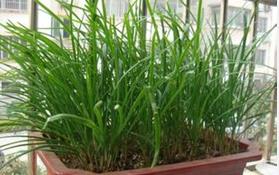
Potted vegetables can be used as miniature potted plants to decorate the room, and decorate the courtyard and balcony. With the continuous improvement of people's living standards, some consumers have shown a new and special need for vegetables, and some new planting methods have gradually been accepted by people. Many citizens hope to grow vegetables that can be viewed and eaten, and can be given to relatives and friends as gifts during the Spring Festival. However, it is inconvenient for residents to grow seedlings at home with soil, and many people do not understand technology, so it is difficult to plant successfully. If suburban vegetable farmers plant vegetables in their own fields and sell them to citizens, it will be much easier for citizens to maintain them only at home. farmers can also obtain relatively high economic benefits. Generally, 667 square meters of potted vegetables can be planted in protected areas, and about 12000 pots (2 crops per year) can be planted. According to the price of 3~5 yuan per pot, the output value of 667 square meters can reach 40,000 ~ 50,000 yuan. Excluding expenses, the benefit of 667 square meters can reach more than 25,000 yuan.
Potted vegetable species
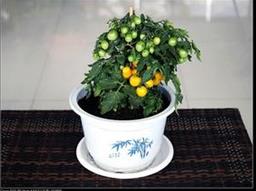
View fruit vegetables color sweet pepper, dwarf tomato, cherry tomato, hard fruit tomato, ornamental eggplant, small pepper, pocket watermelon and all kinds of pumpkin, melon, zucchini, okra and fragrant eggplant, etc.
Colored vegetable leaf beet, all kinds of lettuce, purple back sunflower, purple basil, purple sunflower and mosaic kale, etc.
Green leaf health vegetables lettuce, celery, rattan notoginseng, koji, Beijing water vegetables, pearl vegetables, collard greens, basil, leaf wolfberry, leek and jute, etc.
Root vegetables fennel, cherry radish, fruit turnip, turnip, miniature radish and carrot, etc.
Potted vegetables are available
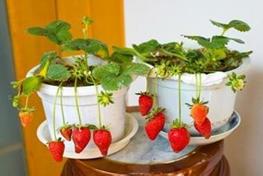
Material: Plastic flowerpots, clay pots or wooden pots must be thoroughly disinfected before use.
2 soil: generally can choose peat, vermiculite, pearlite or clean river sand as the basis of soil.
3 can use certain microorganisms, so that through the activity of beneficial bacteria to promote the full use of nutrients in vegetables.
4 Chemical pesticides cannot be used. However, plant and mineral biopesticides can be used to prevent pest damage.
planting points
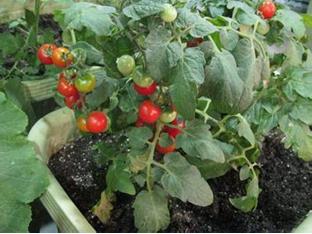
1 Select the right seed and plant it according to the growth period of the seed and the needs of consumers. so as to add a sense of beauty and a need for picking to the balcony.
2 According to the temperature, sunlight, humidity to grow their own needs of vegetables.
3. Management of water and fertilizer must be scientific. Have the right amount of water and nutrients fertilizer to ensure the healthy growth of its plants, grow luxuriantly.
Balcony potted vegetables
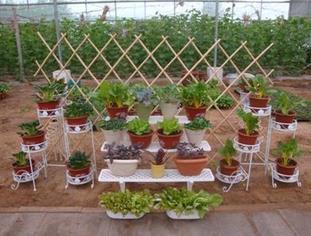
When potted vegetables are planted on balconies, the humidity and sunlight in the air determine what kind of vegetables to plant. Of course, the space on the balcony is also very important, because potted vegetables can add an artistic color to the home, but also for people to eat safe, non-toxic green vegetables.
Generally speaking, many varieties of vegetables can be grown if space permits. And because of the balcony closed sex and to sunshine irradiation, can grow vegetable all the year round. If the balcony is facing south, you can plant the vegetables you want every season, such as cucumber, tomato, needle mushroom, green pepper, lotus root, etc. And if the balcony facing east and west, then you can plant some plants that are resistant to shade and sunshine, such as onions, leeks, loofah, radish, etc. Of course, it must be noted that in summer, the strong light and radiation reflected from the back floors must be tried to defend, so as to ensure that the plants thrive.
For each variety of vegetables, there is a different harvest period, and the following is a small series of different vegetables that can be planted in different cycles for everyone:
Short-cycle fast vegetables: garlic sprouts, small rape, mustard, oil wheat vegetables, etc.
Vegetables with long harvest time: tomatoes, leeks, onions, peppers, etc.
Space-saving vegetables: carrots, coriander, ginger, garlic, etc.
How to control pests in potted vegetables on balcony

1. Bug catching. Primitive but effective. Always look for signs of pests on both sides of the leaves and in the surrounding soil.
2. Isolation. As soon as you see a plant infected or eaten by pests, you should immediately remove it and throw it away for composting. Vegetables that are too deeply affected should be uprooted and thrown away for composting.
3. Homemade natural pesticides. There are many simple and effective recipes. A science journal editor once described such a method: "When my garden was suffering from pests, I found that some plants around the garden were safe. I plucked some of these plants, put them in a blender, and mixed them with an equal amount of water to make a solution. I spray this solution on vegetables in my garden and it works very well." This is because plants that are not affected by pests must contain some kind of disease-resistant and anthelmintic substance. In addition, asparagus juice can kill nematodes that harm tomatoes. Garlic is also good at killing bacteria and insects and can be ground into powder or squeezed to spray on vegetables and seeds. Horseradish also has a strong ability to kill bacteria and insects, in addition to the role of soil purification. Orange peel, pepper, garlic, mint, marigold, sage, rosemary, nasturtium and other plants can be used to make insect repellent.
4. Cultivate the land. Can control cutworms, cotton bollworms, leafhoppers, aphids, mole crickets and other pests. These pests like to lay their eggs on crop stumps or in the soil after harvest in summer and fall. Therefore, after the autumn harvest, tilling the land and burying the crop residues in the soil can prevent pests from laying eggs on it. A second ploughing of the land before planting in the spring will eliminate most of the remaining pests. Tillage should be at least 15 cm deep. In this way, the eggs, pupae and larvae of pests hiding in the ground can be turned out and destroyed by the sun, hot wind and natural enemies. In the days of our grandparents, beneficial birds such as egrets were common to follow the ploughman's plow and pick up insects to eat. Egrets are rarely seen. However, when plowing, if you can catch a few chickens and eat insects behind them, it will also have good results.
5. Protect the seedlings with protective covers. Wrap the stems of seedlings with brown cardboard, insert them into the soil for 5 cm, expose the ground for about 3 cm, and effectively prevent the ground tiger from biting the seedlings. This method can also be used against cotton bollworms.
6. Flour. Sprinkle some flour on cabbage leaves in the morning before the dew is dry. Near noon, you will see fat cabbage worms struggling in the batter and dying in the sun.
7. Ask for help from insects. Insects such as mantis, ladybug, parasitoid and walking bug can help us kill many pests. We can think of some ways to attract them.
8. Find ways to attract birds to help catch pests.
9. Set traps. This method can be used to deal with earwigs. Take four 30-centimeter-long bamboo tubes, paint them green, dry them, tie them into a bundle with nylon string, and place them under a fence tree or other place where earwigs often haunt. A few days later, one morning, shake the earwig out of the bamboo tube into boiling water or gasoline and destroy it.
10. Rinse with water. Spray water from a watering can to flush spider mites off vegetable leaves. Normally, they're washed out and they don't come back. This method can also be used against aphids that harm roses.
11. Plant ash. Sprinkle ash or limestone around vegetables to protect them from cutworms. But be careful not to scatter ashes on the leaves.
12. Placing a bowl of beer next to plants is said to induce snails and slugs to fall and drown. You can also sprinkle a circle of coarse sand, cinder or limestone powder around the vegetable bed to protect the vegetables from snails and slugs.
Seeing that balcony vegetables have so many benefits, and you can also make the vegetables you want to eat yourself, are you tempted? If so, hurry up and choose vegetables that are suitable for growing now! Make it! For your family and your health.
If the balcony is facing south, you can plant the vegetables you want every season, such as cucumber, tomato, needle mushroom, green pepper, lotus root, etc. And if the balcony facing east and west, then you can plant some plants that are resistant to shade and sunshine, such as onions, leeks, loofah, radish, etc. Of course, it must be noted that in summer, the strong light and radiation reflected from the back floors must be tried to defend, so as to ensure that the plants thrive.
For each variety of vegetables, there is a different harvest period, and the following is a small series of different vegetables that can be planted in different cycles for everyone:
Short-cycle fast vegetables: garlic sprouts, small rape, mustard, oil wheat vegetables, etc.
Vegetables with long harvest time: tomatoes, leeks, onions, peppers, etc.
Space-saving vegetables: carrots, coriander, ginger, garlic, etc.
How to control pests in potted vegetables on balcony

1. Bug catching. Primitive but effective. Always look for signs of pests on both sides of the leaves and in the surrounding soil.
2. Isolation. As soon as you see a plant infected or eaten by pests, you should immediately remove it and throw it away for composting. Vegetables that are too deeply affected should be uprooted and thrown away for composting.
3. Homemade natural pesticides. There are many simple and effective recipes. A science journal editor once described such a method: "When my garden was suffering from pests, I found that some plants around the garden were safe. I plucked some of these plants, put them in a blender, and mixed them with an equal amount of water to make a solution. I spray this solution on vegetables in my garden and it works very well." This is because plants that are not affected by pests must contain some kind of disease-resistant and anthelmintic substance. In addition, asparagus juice can kill nematodes that harm tomatoes. Garlic is also good at killing bacteria and insects and can be ground into powder or squeezed to spray on vegetables and seeds. Horseradish also has a strong ability to kill bacteria and insects, in addition to the role of soil purification. Orange peel, pepper, garlic, mint, marigold, sage, rosemary, nasturtium and other plants can be used to make insect repellent.
4. Cultivate the land. Can control cutworms, cotton bollworms, leafhoppers, aphids, mole crickets and other pests. These pests like to lay their eggs on crop stumps or in the soil after harvest in summer and fall. Therefore, after the autumn harvest, tilling the land and burying the crop residues in the soil can prevent pests from laying eggs on it. A second ploughing of the land before planting in the spring will eliminate most of the remaining pests. Tillage should be at least 15 cm deep. In this way, the eggs, pupae and larvae of pests hiding in the ground can be turned out and destroyed by the sun, hot wind and natural enemies. In the days of our grandparents, beneficial birds such as egrets were common to follow the ploughman's plow and pick up insects to eat. Egrets are rarely seen. However, when plowing, if you can catch a few chickens and eat insects behind them, it will also have good results.
5. Protect the seedlings with protective covers. Wrap the stems of seedlings with brown cardboard, insert them into the soil for 5 cm, expose the ground for about 3 cm, and effectively prevent the ground tiger from biting the seedlings. This method can also be used against cotton bollworms.
6. Flour. Sprinkle some flour on cabbage leaves in the morning before the dew is dry. Near noon, you will see fat cabbage worms struggling in the batter and dying in the sun.
7. Ask for help from insects. Insects such as mantis, ladybug, parasitoid and walking bug can help us kill many pests. We can think of some ways to attract them.
8. Find ways to attract birds to help catch pests.
9. Set traps. This method can be used to deal with earwigs. Take four 30-centimeter-long bamboo tubes, paint them green, dry them, tie them into a bundle with nylon string, and place them under a fence tree or other place where earwigs often haunt. A few days later, one morning, shake the earwig out of the bamboo tube into boiling water or gasoline and destroy it.
10. Rinse with water. Spray water from a watering can to flush spider mites off vegetable leaves. Normally, they're washed out and they don't come back. This method can also be used against aphids that harm roses.
11. Plant ash. Sprinkle ash or limestone around vegetables to protect them from cutworms. But be careful not to scatter ashes on the leaves.
12. Placing a bowl of beer next to plants is said to induce snails and slugs to fall and drown. You can also sprinkle a circle of coarse sand, cinder or limestone powder around the vegetable bed to protect the vegetables from snails and slugs.
Seeing that balcony vegetables have so many benefits, and you can also make the vegetables you want to eat yourself, are you tempted? If so, hurry up and choose vegetables that are suitable for growing now! Make it! For your family and your health.
Related
- Wuhan Hospital Iron Tree Blooming Result Was Instantly Frightened by the Gardener Master
- Which variety of camellia is the most fragrant and best? Which one do you like best?
- What is the small blue coat, the breeding methods and matters needing attention of the succulent plant
- Dormancy time and maintenance management of succulent plants during dormancy
- Minas succulent how to raise, Minas succulent plant pictures
- What are the varieties of winter succulent plants
- How to raise succulent plants in twelve rolls? let's take a look at some experience of breeding twelve rolls.
- Attention should be paid to water control for succulent plants during dormant period (winter and summer)
- Watering experience of twelve rolls of succulent plants
- Techniques for fertilizing succulent plants. An article will let you know how to fertilize succulent plants.



